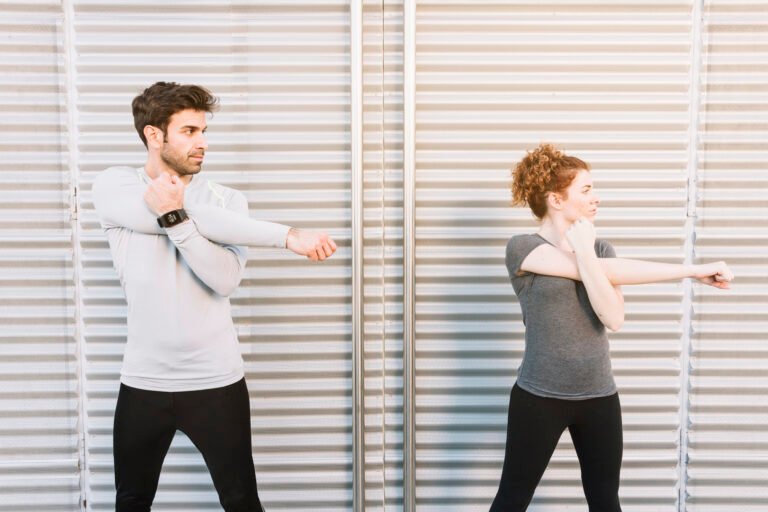When it comes to true strength, it’s not always about how much weight you can lift or how fast you can run. Strength is about control, stability, and endurance. If you want a benchmark that tests all three, the single-arm side plank hold is the perfect challenge.
This seemingly simple move is a total-body exercise that focuses on core strength, shoulder stability, and hip control. If you can hold a single-arm side plank for one full minute on each side with perfect form, congratulations—you’re officially fitter than average.
But before you think this is just another basic plank variation, let me explain why it’s much more than that. The single-arm side plank is one of the most brutal and effective exercises because it requires more than just brute force. It’s a test of your balance, mental toughness, and functional strength.
Ready to see where you stand? Let’s break down the physical demands of the single-arm side plank and how you can work up to the full hold.
The Physical Demands of the Single-Arm Side Plank

The single-arm side plank is a full-body challenge. It targets multiple muscle groups at once, making it a great measure of overall fitness. Here’s a breakdown of the muscles at play:
1. Core & Obliques
Your core muscles, particularly your obliques, are responsible for stabilizing your body and preventing rotation or collapse. The side plank forces these muscles to work overtime, building endurance and strength.
2. Shoulder Stability
Holding yourself up on one arm challenges your deltoids, rotator cuff, and scapular stabilizers. These muscles are essential for shoulder health and play a key role in any lifting or pushing motion.
3. Hip Control
Your glutes and hip abductors engage to keep your hips elevated and aligned. This adds another layer of challenge, making the single-arm side plank a test of full-body control.
4. Full-Body Endurance
Every muscle from your hands to your feet works to maintain proper form. The single-arm side plank is a dynamic test of full-body coordination and resilience. It isn’t just about strength; it’s about sustaining that strength over time.
How to Perform the Single-Arm Side Plank Hold

Proper form is absolutely essential when performing a side plank. Sloppy technique not only reduces the effectiveness of the move but also increases the risk of injury. Here’s how to do it with perfect form:
1. Start Position
- Lie on your side with your legs stacked and your bottom elbow directly under your shoulder.
- Your body should be in a straight line from head to heels.
2. Lift Up
- Press through your forearm and feet to lift your hips off the ground. Keep your body in a straight line.
3. Extend Your Top Arm
- Reach your top arm straight overhead, perpendicular to the floor. Keep your gaze forward or slightly downward to avoid neck strain.
4. Engage Everything
- Squeeze your glutes, brace your core, and press firmly into your supporting hand. Avoid letting your hips sag or rotate forward.
5. Hold Steady
- Aim for 30 seconds to start, gradually increasing to 1 minute per side.
Form Cues:
- Shoulders: Keep your shoulders packed down and back (no shrugging).
- Spine: Maintain a neutral spine—don’t arch or round your back.
- Breathing: Breathe deeply and steadily throughout the hold. Don’t hold your breath!
Progression Guide: Building Up to the Full Hold

Not everyone can jump straight into the full single-arm side plank. If you’re not quite there yet, don’t worry. There are progressions to help you build the necessary strength and stability.
1. Standard Side Plank
- Start with the traditional side plank to establish a baseline for core and shoulder stability. Aim for 30-60 seconds without letting your hips drop.
2. Side Plank Hip Lifts
- In a standard side plank position, lower your hips toward the floor and then lift them back up. Perform 8–12 reps per side to strengthen your obliques and glutes.
3. Shoulder Taps in High Plank
- From a high plank position, alternate tapping each shoulder with the opposite hand. This mimics the shoulder stability required for the single-arm side plank.
4. Single-Arm Dumbbell Holds
- Hold a moderate-weight dumbbell in one hand while standing tall. Engage your core and resist the urge to lean toward the weighted side. This helps build unilateral strength and control.
5. Elevated Single-Arm Side Plank
- To make the movement easier, place your bottom knee on the ground for support while practicing the extended arm position. Gradually increase your hold time until you can transition to the full version.
Why Functional Strength Matters
The single-arm side plank isn’t just a fitness test; it’s a reflection of your functional strength. In real life, strength isn’t just about lifting heavy weights or running fast. Life is full of movements that require balance, stability, and endurance—whether you’re carrying groceries, swinging a golf club, or just getting out of bed.
Mastering the single-arm side plank proves you have the strength and control needed for these everyday movements. It’s not just about muscle size—it’s about having a body that moves effectively and stays injury-free.
Train Smarter, Not Harder
The key to improving your fitness isn’t always about pushing yourself harder; sometimes, it’s about training smarter. The single-arm side plank is an excellent example of a move that provides maximum benefits with minimal risk. It’s safe, scalable, and incredibly effective at building the kind of strength that transfers to real-life situations.
So here’s your challenge: commit to mastering this move over the next few weeks. Start with the progressions, prioritize form over quantity, and gradually work your way up to the full one-minute hold. When you finally nail it, you’ll know you’ve earned it—and you’ll feel proud of the resilient, capable body you’ve built.
A Stronger, More Resilient You
The single-arm side plank may seem deceptively simple, but it’s a true test of strength, control, and endurance. It’s an exercise that pushes you to work your whole body in a coordinated way, which is exactly what functional strength is all about.
So, are you ready to put your strength to the test? Incorporate these progressions into your routine, and with consistency and effort, you’ll soon be holding that one-minute side plank like a pro. Not only will your core and shoulders get stronger, but you’ll also build the kind of resilience that will benefit you in all areas of life.
The road to functional strength starts now. Let’s go!







